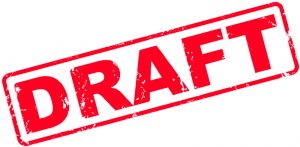
From the WIA, original post here.
Date : 17 / 05 / 2017
Author : Roger Harrison – VK2ZRH
The WIA has advocated and promoted reform of the Amateur licence conditions since it was invited by the ACMA to provide a submission on the subject in 2014. The Board and Spectrum Strategy Committee made extensive efforts since then to “prepare the ground” with the ACMA on the proposed changes to Amateur licence conditions and the principles underlying the proposals.
In April 2016, an updated submission was provided to the ACMA, again, at its request, which consolidated what had transpired over the period since the first submission, along with Amateur community and member feedback, periodic discussions with the ACMA, and the federal government’s Spectrum Review. That submission can be downloaded here.
In summary, the underlying purpose is to enable greater self-determination for the amateur service, along with proposing updates to the licence conditions for all licence grades in order to ensure amateur radio remains relevant in the digitally-connected age. Key proposals include:
- enabling use of digital modes for Foundation licensees
- access to more bands for Foundation and Standard licensees
- relaxing permitted bandwidths for all license grades
- removing mode restrictions
- enabling DIY construction for Foundation licensees
- review of Foundation callsigns to provide 3-letter suffixes
- increased maximum power for all licensee
This consultation exercise is to provide the ACMA with formal evidential support for the proposed changes to the Amateur licence conditions.
The key principle is that future licence conditions should not unnecessarily limit the breadth and depth of experimentation amateurs can explore and the technologies capable amateurs may wish to adapt and exploit.
WIA member or not, your responses have equal weight.
60 metre band: Note that, as the ITU adopted a world-wide secondary allocation at 5.3 MHz at the World Radio Conference 2015, the WIA is already working with the ACMA to make this band available to Australian amateurs. It is already noted in the Australian Radiofrequency Spectrum Plan, which came into effect on 1 January 2017. See more here.
Three phases of consultation
This consultation will be conducted in three phases:
Phase 1 – general principles – open now. Closes on 4 June 2017.
Phase 2 – proposed changes to each licence grade – opens 5 June 2017, closes 25 June 2017.
Phase 3 – outstanding issues – opens 17 June 2017, closes 30 June 2017.
To provide your responses to Phase 1, go here.





